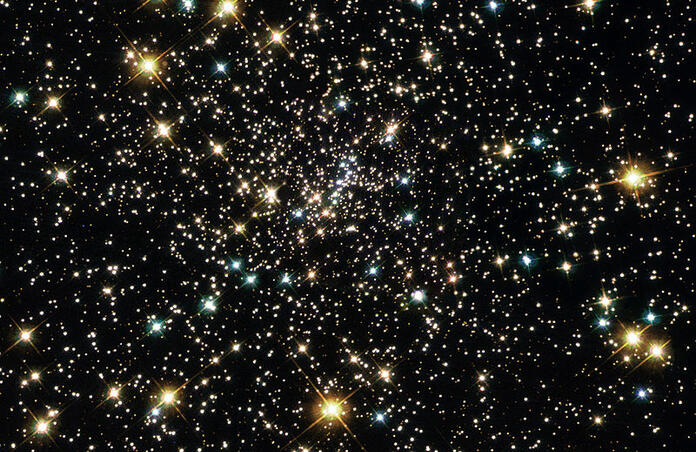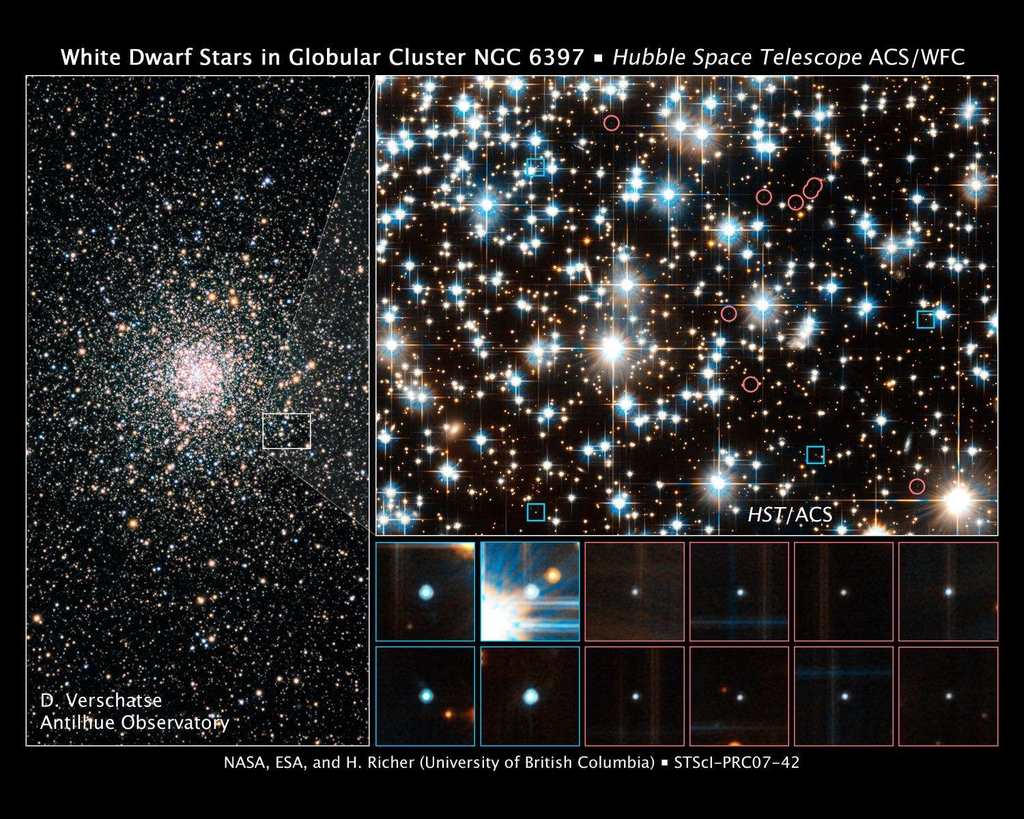A cluster of black holes hides in the star cluster

One of the globular clusters closest to Earth contains a collection of small black holes among its 400 000 stars.
The globular cluster NGC 6397, or Caldwell 86, has already been used for several studies. By measuring the beryllium content of stars in the cluster, the time elapsed since the formation of the first stars in the Universe (required to produce and diffuse elements heavier than Helium during supernovae) and the formation of the cluster could be established, from which a time of 13.6 billion years was estimated for the Milky Way (11.5 billion for the cluster itself). As well, by studying the faintest stars in NGC 6397, a lower mass limit for stars was found, that is, the mass required for a star to be able to start fusion reactions at its core: about 0.083 solar masses. Interestingly, unusual white dwarf stars have been observed in this cluster, their composition is mainly helium which isn’t what we expect from these stellar remnants. An explanation that has been put forward is that these were part of a binary system, where a star in its giant phase transfers its mass onto its companion, keeping less mass for helium fusion and thus leaving a white dwarf with low carbon and oxygen content.

Now the cluster has answered another astrophysical question: studies of the mass inside the cluster reveal that there isn’t just on central black hole, but a collection of smaller ones. Due to a type of force known as “dynamical friction”, in a gravitationally bound system heavy objects move towards the centre of the group – think of the galaxy and its supermassive black hole at the core. By studying the motion of stars in the cluster, conclusions can be drawn about the mass distribution. Astronomers have observed extra mass inside the cluster; it can’t be dark matter as the spreading of that substance is well-understood for clusters. This invisible mass is distributed over a few percent of the cluster’s centre, suggesting it’s not a unique, point-like mass excess but indeed a cluster of smaller black holes. Although this means that the black holes have masses comparable to that of large stars, less heavy star’s motion gets impacted as the black holes migrate towards the centre and astronomers could map such unusual trajectories impacted by an unseen object. This could lead to more insight into the formation of larger black holes, as intermediate-mass black holes, between stellar-mass black holes left over from a massive star’s supernova and supermassive ones, are thought to result from the aggregation of these stellar-mass ones and constitute the core of the oldest star clusters.
It is also an exciting research avenue for the gravitational wave method. Mergers of black holes have already been observed, however monitoring the events of such a cluster, where interactions are more frequent since the objects are closer to each other, is unprecedented. The cluster is a good target for astrophotography, too! It can even be visible with the naked eye during very clear nights.
Cover Image: NGC 6397 with the Hubble Space Telescope NASA/ESA/AURA/STScI
Image credits:
1- White dwarfs in NGC 6397, NASA
